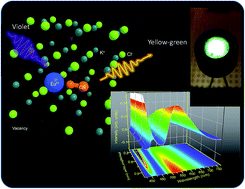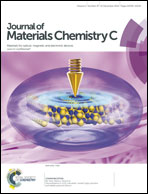White-light-emitting KCl:Eu2+/KCN crystal for solid-state lighting devices
Abstract
The optical and colorimetric properties of a KCl:Eu2+/KCN crystal are analyzed in this paper to verify its potential for the development of white-light-emitting diode (WLED) devices. An unusual broad and intense yellow-green emission band is observed at 530 nm when this crystal is excited with UV radiation. This emission originates from the coupling between the Eu2+ ions and multiple CN− molecular ions. Luminescence experiments, at middle infrared and visible spectral regions, at different temperatures and excitations indicate that both emissions are characteristic of the energy transfer from the Eu2+ ions to the CN− molecular ions. The luminescence quantum efficiency of this material was measured using thermal lens spectroscopy, which provided a high value of ∼95%. Based on the experimental results, a model to explain the Eu–CN coupling is proposed. A WLED prototype was constructed using an UV LED to excite the KCl:Eu2+/KCN crystal and using a small amount of Y2O3:Eu3+ phosphor powder to compensate for the red color. The results showed a correlated color temperature of 3300 K; the u′, v′ color coordinate distance to the Planckian Locus (Du′v′) was −0.0008, and the Color Rendering Index (CRI) was approximately 90. These parameters are considered excellent for white light for indoor illumination. Therefore, the results of this work suggest that this crystal is promising for white-light applications.


 Please wait while we load your content...
Please wait while we load your content...